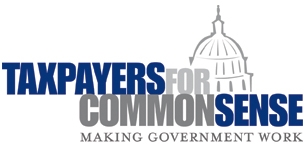|
Investigation Reveals Weaknesses in Federal Firefighting Funding for Wildfire Management Could be Wasted, Misused, Says Watchdog Washington, D.C. – Failure to implement the National Fire Plan has cost taxpayers millions and needlessly risked firefighter lives, according to Taxpayers for Common Sense, a budget watchdog group and prominent critic of federal firefighting practices. “The firefighting bureaucracy is burning through billions of dollars without much thought as to whether it is being spent in the right places,” according to Jonathan Oppenheimer, Forest Campaign Director at Taxpayers for Common Sense. Earlier this week, General Accounting Office (GAO) officials testified that the USDA Forest Service and the U.S. Department of Interior have failed to implement the National Fire Plan, a congressionally mandated proposal. According to allegations made Tuesday before a congressional committee, “the National Fire Plan will become little more than a funding source that will not allow for accountability at the national level.” The GAO pointed out the failure to comply with the 1995 Federal Wildland Fire Policy. One of the key recommendations of the policy was to implement Fire Management Plans for every burnable acre of public land. As of June 30, 2001, 56% of all units managed by the Forest Service and Interior Department lack approved plans. “Federal agencies have gone hiking without a trailmap,” said Oppenheimer. “Fighting fires without Fire Management Plans wastes millions of dollars each year and threatens the lives of firefighters.” The testimony highlighted several other problems that continue to hamper efforts to reduce the risk of wildfire in the nation's public lands. The GAO blasted the Forest Service and the Interior Department for failing to define the Wildland-Urban Interface, where the proximity of communities to forests makes wildfires particularly dangerous. The Forest Service and Interior Department have identified over 22,000 communities in the Wildland-Urban Interface, even though there is no agreed-upon definition for the term. As yet, only the Interior Department has identified high-risk communities, and over half of these are in three southeastern states, where severe wildfires do not even occur. According to the GAO testimony, “funds appropriated for wildland fire management may not be used in an efficient, effective and timely manner.” “As long as Congress keeps writing blank checks, there will be little incentive for these agencies to change the way they do business,” said Oppenheimer. “If Congress really wants to reform firefighting, they've got to stop throwing money at the fires.” MORE INFORMATION
Read the Testimony (2001 GAO Testimony – Federal Agencies Are Not Organized to Effectively and Efficiently Implement the Plan) |











